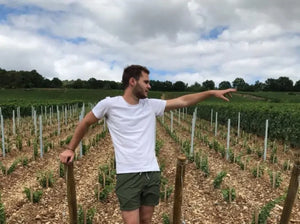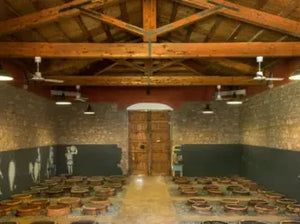Blog » Limestone
-
Leaping Over Legacy: Pierre Girardin Bourgogne
Vincent Girardin's name was synonymous with Burgundy's breadth, with wines coming from enviable vineyards throughout the Côte d'Or. Although the vast terroir had undeniable gems from Grand Crus and Premier Crus, the large production made for boring wines. When Vincent sold the domaine in 2011, he kept 4.5 hectares of the top holdings for his son, Pierre. After spending time in the vines, cuverie, and cellar from a very young age, the 21-year-old Pierre wanted to take a different philosophical path with his label. He was determined to be associated with the highest quality work––albeit with much more limited availability.
As the cuvée's label suggests, calcaire (limestone) is what Pierre wants to express, and the lens of terroir is in focus with these terrific Bourgogne wines. Pierre's methods highlight freshness and finesse––a rare move was selecting considerably larger 456L barrels for aging and favoring punchovers (as opposed to punchdowns) for the reds to keep their tannins silken. The value proposition in Burgundy is one that we bring up a lot. No doubt, pricing keeps climbing, but the emergence of new values is always around the corner. Pierre Girardin is a name that delivers in a big way with a relatively low price tag, given the quality and terroir. -
Dreamers of Vittoria: COS
There's no better introduction to Sicily's Vittoria than the dream project started by Giambattista Cilia, Giusto Occhipinti, and Cirino Strano (COS) in 1980. These groundbreakers put the once obscure Frappato and Nero d'Avola on the world map!
Driving from Mt. Etna to Vittoria reminded me just how varied the landscape and terroir of Sicily were. Temperatures rose, and the climate turned arid. It was hard to believe the place I was heading was beloved for the freshness and clarity of its wines.
They key? There's a constant breeze going through the Hyblaean mountains, and the vines here are on red clay and sand over a deep bedrock of limestone. The wind helps moderate the inland temperatures, the red sand cooling immediately after sunset, and the limestone is responsible for low pH levels in the wine, giving high acidity and nervy minerality.
I visited Giusto Occhipinti just as they were bottling a new vintage. The wines we tasted were fermented in cement and aged in large Slavonian oak casks, similar to one's used for traditional Barolo and Brunello. This technique ensures the wines accentuate crisp, refreshing notes that make the wines a joy to drink.
.svg?v=162776257677185172071724397232)




